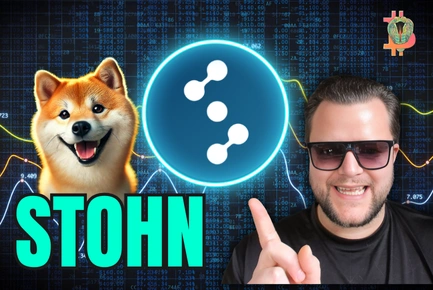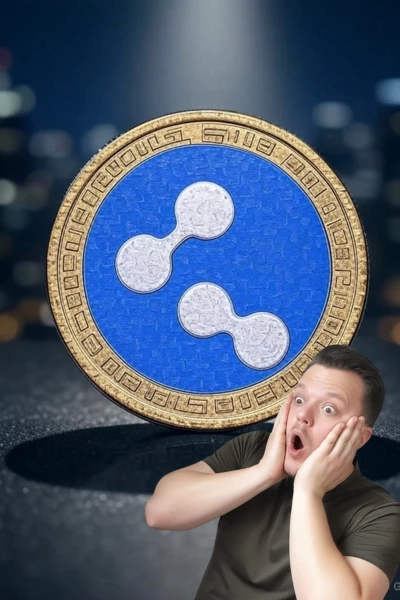Stohn Coin (SOH) emerges as a forward-thinking, decentralized digital asset and payment network, engineered to address the persistent challenges facing traditional cryptocurrencies.
Operating on a peer-to-peer (P2P) network, Stohn utilizes a Proof-of-Work (POW) consensus mechanism but distinguishes itself through key technological choices aimed at enhancing speed, security, and accessibility.
With its strong foundation in decentralization and transparency, the project aims to facilitate secure, fast transactions with exceptionally low processing fees, free from the control of any centralized government, authority, or bank.
Table of Contents
What Is Stohn Coin?

Stohn Coin is a cutting-edge new blockchain project designed to address key challenges in the cryptocurrency ecosystem. Launched in 2024, it leverages advanced blockchain technology to offer faster transactions, greater scalability, and eco-friendly mining options.
The creators of Stohn Coin sought to develop a project that would not only appeal to crypto enthusiasts but also solve real-world problems. Its emphasis on sustainability, usability, and community engagement makes it a standout among new crypto projects.
Stohn Coin is envisioned as a viable alternative to fiat currencies, designed for seamless everyday use, cross-border transactions, and investment purposes.
It is not merely another digital asset but an open-source, community-driven initiative dedicated to revolutionizing how value is transferred globally.
Buy Stohn CoinThe Impasse of Legacy Cryptocurrencies

The rapid rise and adoption of cryptocurrencies have showcased their inherent advantages over traditional financial systems, including borderless operation, faster transaction times, and lower fees. However, widespread use has been hampered by several critical issues inherent in many first-generation systems, particularly those using older POW mechanisms.
These systems often suffer from scalability challenges, which can result in network congestion and delayed transactions during peak usage times. Additionally, the significant energy consumption associated with proof-of-work (POW) mining has raised concerns regarding environmental sustainability and the long-term viability of such models.
To address these shortcomings, many projects are now exploring alternative consensus mechanisms like proof-of-stake (POS), which promise to enhance scalability while drastically reducing energy requirements. By shifting towards more efficient methods of validating transactions, cryptocurrencies could not only alleviate current operational bottlenecks but also attract a broader user base that prioritizes ethical considerations in their financial dealings.
Furthermore, improvements in user interfaces and educational resources are essential for fostering greater understanding and accessibility among potential users who may be intimidated by the technical complexities of blockchain technology. Initiatives aimed at simplifying the onboarding process can empower more individuals to participate actively in this evolving landscape.
As we move forward into this new financial frontier, it is crucial for stakeholders—developers, regulators, and users alike—to collaborate on creating robust frameworks that address these issues while harnessing the transformative potential of digital currencies. This collaborative effort will pave the way towards a future where cryptocurrencies can operate seamlessly alongside traditional systems, ultimately enriching our global economy with innovation and inclusivity.
Scalability and Transaction Throughput

A major drawback of legacy cryptocurrencies like Bitcoin is their limited transaction throughput, leading to slow confirmation times and high fees during peak network activity. Bitcoin’s processing speed of 5–7 transactions per second (TPS) makes it impractical for everyday micro-transactions, like buying a cup of coffee. Stohn Coin was designed to overcome this limitation through structural improvements.
That enhance scalability and efficiency By implementing a unique consensus mechanism, Stohn Coin can achieve transaction speeds of up to 1,000 TPS without sacrificing security or decentralization. This innovative approach allows for rapid confirmation times, which significantly reduces the costs associated with each transaction.
Moreover, Stohn Coin employs advanced sharding techniques that distribute the processing load across multiple nodes in the network. This not only helps to alleviate congestion during peak times but also ensures that users can transact seamlessly regardless of network activity levels.
By allowing micro-transactions to occur quickly and at minimal fees, Stohn Coin opens up new opportunities for everyday use cases—transforming how we think about digital currency in our daily lives.
Why Stohn Coin Outshines Other New Coin Projects

The high computational power required by the SHA-256 Proof-of-Work consensus mechanism used by Bitcoin has led to significant energy consumption and substantial environmental concerns. This has resulted in restrictions and negative press, creating a need for more energy-efficient alternatives to traditional mining methods.
One promising solution lies in the development of Proof-of-Stake (PoS) systems, which allow participants to validate transactions based on the number of coins they hold and are willing to “stake” as collateral. Unlike Proof-of-Work, PoS drastically reduces energy consumption by eliminating the need for intensive mathematical computations.
Furthermore, several blockchains have begun exploring hybrid models that combine aspects of both PoW and PoS, aiming to strike a balance between security and efficiency. These innovations present an opportunity for cryptocurrencies to not only reduce their carbon footprint but also enhance transaction speeds and scalability.
Adoption of these alternative consensus mechanisms could pave the way for broader acceptance of cryptocurrencies among environmentally conscious investors and institutions. Regulatory bodies may also be more inclined to embrace technologies that demonstrate a commitment to sustainability, thereby fostering a healthier ecosystem within the digital currency landscape.
By investing in research and development of energy-efficient blockchain technologies, we can ensure that cryptocurrencies evolve responsibly while maintaining their foundational principles of decentralization and security.
Privacy and Usability Concerns

While blockchain transactions are often described as anonymous, they are in fact pseudonymous, recorded on a public ledger. The identities of transacting parties are obscured by wallet addresses, but the lack of true privacy can pose challenges for businesses and individuals seeking to protect financial details from being tracked or traced.
Furthermore, traditional crypto platforms can be overly complex for average users, limiting adoption primarily to a smaller community of tech-savvy individuals.
Stohn Coin’s Technological Foundation
Stohn Coin addresses these challenges through a suite of innovative technologies and protocol modifications. The network is built upon a modified version of the Bitcoin protocol, employing key innovations to ensure speed, security, and true decentralization.
The Scrypt Hashing Algorithm
The core technological choice that defines Stohn Coin’s mining dynamic is the adoption of the Scrypt hashing algorithm. While Bitcoin uses the SHA-256 algorithm, Stohn chose Scrypt to lower the barrier to entry and promote a more robust, decentralized network.
Memory-Hardness and ASIC Resistance
The primary design feature of Scrypt is its memory hardness. Unlike SHA-256, which is computationally intensive but memory-light, Scrypt requires a substantial amount of memory to perform hash computations. This memory-hardness directly counters the centralization inherent in ASIC (Application-Specific Integrated Circuit) mining.
By increasing the cost and complexity of designing specialized Scrypt ASICs, the algorithm ensures that mining remains accessible to individuals using conventional hardware like CPUs and GPUs.
Sequential Memory Access and Two-Pass Design
Scrypt utilizes sequential memory access, which involves a series of memory lookups in a defined order rather than random access. This pattern makes it difficult to optimize the algorithm for parallel processing, further discouraging the development of specialized mining hardware.
The process employs a two-pass design, where the first pass generates a large amount of pseudo-random data stored in memory, and the second pass executes the actual hash computations using this data. This structure enhances memory-hardness and fortifies the system against attacks, such as precomputation.
By leveraging Scrypt, Stohn maintains a decentralized consensus process, ensuring that no single entity gains control over the network, which makes it more secure and less susceptible to centralized hacking attacks.
Enhancing Scalability and Speed

Stohn Coin significantly improves upon Bitcoin’s transaction speed and block confirmation time, enhancing its utility for everyday commerce.
- Faster Block Time: The time required to mine a new block on the Stohn network is approximately 5 minutes, which is half the time required by Bitcoin’s 10-minute block interval.
- Higher Throughput: This reduced block time, combined with a greater effective block size, allows Stohn Coin to process more transactions faster, achieving a base transaction processing speed of approximately 50 TPS. This speed is roughly ten times that of Bitcoin’s base layer.
Layer 2 Solutions and Protocol Upgrades
Stohn Coin’s architecture has been future-proofed with protocol upgrades to enable further scalability and innovation.
- Segregated Witness (SegWit): This crucial protocol upgrade separates the signature (or witness) data from the transaction data. By doing so, it frees up block space, allowing more transactions to be included in each block, which directly increases the network’s capacity and reduces transaction costs. SegWit also resolves issues related to transaction malleability and is essential for enabling Layer 2 solutions, such as the Lightning Network. The Lightning Network would further increase Stohn’s TPS, pushing its scalability far beyond its base layer.
- Schnorr Signatures: Stohn also utilizes Schnorr signatures, a sophisticated signature scheme that reduces the size of transactions. This reduction contributes to faster confirmation times and lower fees, improving network efficiency.
Tokenomics and Monetary Policy
The monetary policy of Stohn Coin is rooted in scarcity and predictable emission, mirroring the economic principles of other successful POW assets while maintaining a modified structure.
Maximum Supply and Supply Adjustment
Stohn Coin (SOH) is a capped asset with a maximum circulating supply of 43,982,239 SOH. The supply currently stands at approximately 25 million SOH already mined.
The initial cap was 40,000,000 SOH, but the total supply was adjusted in February 2024 to its current figure. This adjustment, which added 3,982,239 SOH to the total supply, was a one-time modification allocated specifically to compensate exchanges and users affected by past hacking and theft incidents. The whitepaper explicitly states this is the only modification to the SOH supply that has been or will ever be made.
Mining Reward and Halving Schedule
The mining process is integral to the Stohn network, validating transactions and adding new blocks to the blockchain. Miners receive SOH as an incentive for confirming each block.
- Reward Mechanism: Stohn rewards began at 100 SOH per block.
- Halving Schedule: The block reward is halved approximately every four years, specifically every 200,000 blocks.
- Current and Future Halvings: The reward has already been reduced to 50 SOH per block. The next scheduled halving is anticipated to occur in December 2028.
- End of Mining: The last Stohn Coin block reward is predicted to be mined in August 2076, at which point the maximum cap will have been reached.
This predetermined and transparent halving schedule ensures long-term security through mining incentives while maintaining the asset’s scarcity.
Stohn Coin’s Architectural Density and Vision

To fully appreciate the Stohn Coin project, it is useful to consider the concept of a “Stohn Coin of 2% density.” This phrase, though not a technical term from the whitepaper, encapsulates the project’s strategic philosophical goal: to maximize utility, security, and decentralization while minimizing friction and energy cost.
The “2% density” can be interpreted as the effort to achieve 100% of the core functionality of a decentralized currency with only a fraction (a metaphorical 2%) of the overhead found in legacy systems.
- Density in Efficiency: Stohn achieves a massive density of transactions (50 TPS) in a fraction of the time (5-minute blocks) compared to its predecessors. The architectural density is achieved through the low-cost memory requirements of the Scrypt algorithm combined with the efficiency gains from SegWit and Schnorr signatures. This suite of technologies creates a network that is densely packed with transaction capacity without being densely prohibitive in terms of required computational power or environmental cost.
- Density in Decentralization: The use of Scrypt creates a “low-density” barrier to entry for miners, allowing a higher density of participation across the network. The fact that anyone with a CPU, GPU, or ASIC can participate in mining ensures a broad and robust network of nodes run by volunteers globally, contributing to unparalleled decentralization. This high-density distribution of control is a direct countermeasure to the low-density concentration of power seen in highly centralized ASIC-dominated mining pools.
- The philosophy is clear: a successful digital asset must be structurally dense in security and capacity, yet low-density in its environmental footprint and accessibility requirements. Stohn Coin’s 2% density is a measure of its optimized, lightweight, and highly effective implementation of a robust Proof-of-Work system.
Ecosystem and Future Development
Stohn Coin is a community-driven project, emphasizing transparency and collaborative governance. The active community comprises developers, miners, traders, investors, and enthusiasts who contribute to its continued success. Decisions concerning the network are made through a decentralized consensus process, ensuring the network remains open and maintains no single point of control.
Wallets and Storage
Secure management of Stohn is facilitated through various digital wallet solutions, offering users choices based on their needs for security and convenience.
- Desktop Wallets: These are software-based wallets installed on a computer, offering a high level of security and being ideal for storing large amounts of SOH.
- Mobile Wallets: These smartphone applications offer convenience and ease of use for accessing Stohn on the go, though they may offer a slightly lower level of security than desktop options.
- Hardware Wallets: Considered the most secure option, these physical devices are specifically designed to store cryptocurrency offline, making them immune to internet-based hacking attacks.
Forward Roadmap
The development team maintains an active Stohn roadmap, focusing on continuous improvement and the expansion of the Stohn ecosystem.
The key future developments are centered on expanding the asset’s utility:
- Decentralized Finance (DeFi): A primary goal is the development of a DeFi component for Stohn Coin, with a target timeline of 6–8 months. This will allow SOH to participate in various decentralized lending, borrowing, and trading activities.
- International Payments: Stohn Coin is committed to becoming the “go-to” solution for international payments, focusing on facilitating faster and easier transactions between individuals and companies with minimal to no fees.
In conclusion, Stohn Coin represents a highly optimized and decentralized solution in the digital payments landscape. By carefully selecting the Scrypt algorithm and implementing modern protocol upgrades like SegWit and Schnorr signatures, it has built a platform that is secure, fast, and environmentally conscious. Its commitment to a high-density, high-utility network with a low barrier to entry the Stohn Coin of 2% density—positions it to achieve its goal of a more accessible and efficient global payment system.

